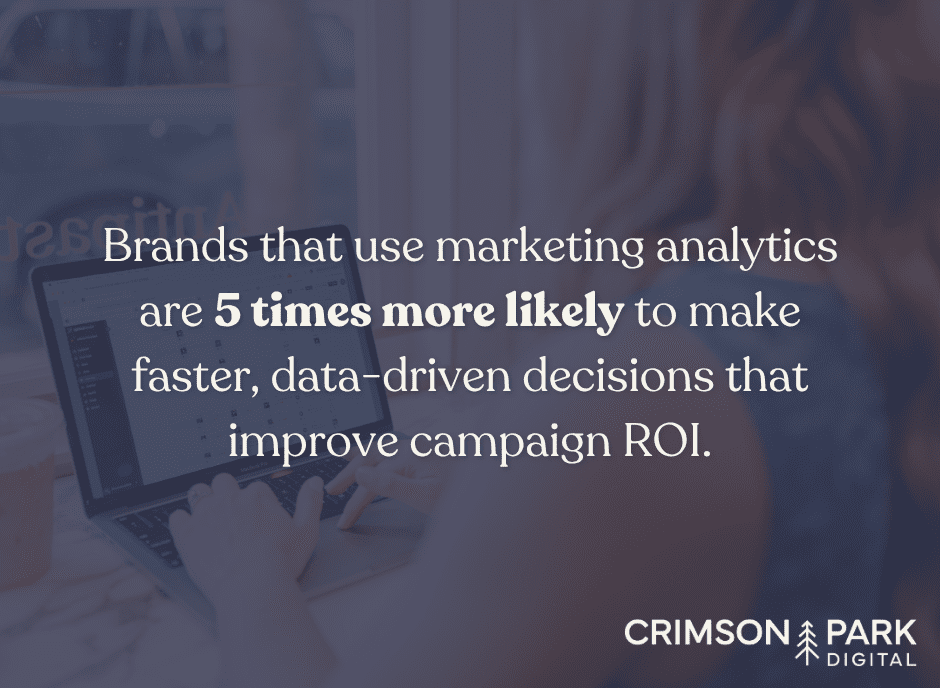Smart Marketing Analytics Isn’t Magic, But It Feels Like It
At its heart, smart marketing analytics is all about making sense of what people do online. Think of it as turning “huh, interesting” into actionable steps that improve your campaigns.
You can find out:
- Which marketing channels actually drive engagement
- What type of content your audience loves
- Which campaigns are just… not hitting

Tools do the heavy lifting, but the real magic comes from connecting the dots. Collect the data, understand it, and you can make decisions that feel like you’ve got a crystal ball.
Some common players in this space include:
- Data collection tools: From web analytics to social listening software, these track behavior across platforms
- Analytics platforms: They turn messy numbers into dashboards you can actually understand
- Predictive analytics: Gives you a sneak peek at trends before they hit
Why You Should Care About Customer Behavior
Your customers aren’t robots. But understanding them can feel like decoding one. Observing behavior tells you what makes people tick: what grabs attention, what makes them scroll past, and what finally gets them to click “schedule a consultation” or “reserve a table”.
The benefits? You can:
- Target messaging better so it lands
- Adjust products or services based on real insights
- Keep people coming back instead of ghosting you
The trick is piecing together data from multiple sources: social media, website visits, email campaigns, customer support chats, and reviews. When it all comes together, you get a clear picture of who your audience really is.
Building a Data-Driven Foundation for Your Marketing Strategy
Numbers are only as good as your strategy. That means setting up a marketing approach that treats data like gold. Start with what you already have: website metrics, social insights, even feedback forms.
From there, ask:
- What metrics actually matter for growth?
- How will you collect and analyze them?
- How often will you check the pulse of your campaigns?
A strong foundation turns guesswork into informed decisions. It helps predict trends, improve engagement, and keep your brand ahead of competitors. Plus, it saves you from endlessly tweaking things that don’t matter.

Must-Have Tools for Smarter Marketing
You don’t need every shiny new platform to start analyzing smarter. A few key tools can make a big difference:
- Google Analytics: Perfect for seeing who visits, where they came from, and what they do on your site
- CRM systems: Keep track of interactions and customer journeys
- Social media analytics: Learn which posts actually make people engage
- Email marketing platforms: Know who opens, clicks, and converts
The real value comes from knowing what to look for, not just having access to dashboards. These tools turn raw data into decisions that drive results.
Turning Data Insights Into Action
Here’s where the fun begins. Data by itself isn’t enough; it needs context. Once you identify patterns, the next step is determining how to utilize them.
You might notice certain channels underperforming, certain content spiking off the charts, or segments of customers who convert like crazy. Then comes testing, tweaking, and optimizing.
A few approaches to consider:
- Analyze behavior to tailor messaging
- Reallocate resources to high-performing channels
- Test different versions of emails, ads, or landing pages
- Focus efforts on customer segments that actually convert
The more you adapt, the more your campaigns improve. Think of it like tending a garden: water the plants that grow, trim what’s wilting, and watch the whole thing flourish.
Personalization and Segmentation Matter
Nobody likes one-size-fits-all marketing. Personalization makes your brand feel human, relevant, and memorable. Segmentation helps you divide your audience into groups, allowing each to receive messaging that resonates.
Some smart ways to personalize without going overboard:
- Create detailed personas to understand customer needs
- Tailor messages based on previous interactions
- Use dynamic content that changes depending on behavior
- Adjust messaging for where a customer is in the buying journey
The payoff? Higher engagement, more conversions, and loyal customers who feel understood.
Marketing Metrics That Actually Matter
It’s tempting to track every metric under the sun, but not all numbers are created equal. Focus on metrics that show if your marketing is truly effective:
- Conversion rate: Are people taking action?
- Customer acquisition cost (CAC): How much does it cost to win a new customer?
- ROI: Are campaigns profitable?
- Customer lifetime value (CLV): How much revenue can a customer bring over time?
Keep an eye on these, tweak your strategies, and you’ll see improvements in both performance and budget efficiency.
Overcoming Common Analytics Challenges
Analytics can be messy. Too much data, outdated info, or untrained staff can all trip you up.
Some ways to tackle these challenges:
- Use strong data management systems
- Audit data regularly to maintain accuracy
- Train your team so everyone knows what numbers really mean
The key is aligning analytics with real business goals. When marketing, sales, and data teams collaborate, it stops being “data for data’s sake” and starts fueling growth.
Future Analytics Trends to Watch
The world of analytics moves fast. AI, machine learning, and predictive analytics are already shaking things up. AI can process massive datasets in seconds, uncovering patterns humans might miss. Predictive analytics gives a peek into future behavior, helping brands anticipate trends.
Keep an eye on:
- More AI-powered tools for smarter insights
- Real-time dashboards replacing monthly reports
- Highly personalized campaigns driven by predictive data
Being aware of these trends gives businesses a competitive edge without needing to become a tech wizard overnight.
Getting Started With Analyzing Marketing Metrics
Feeling overwhelmed? Start small. Identify what you want to achieve and work backward. Audit current data sources, pick tools that match your needs, and train your team to use them. Even small steps make a big difference over time.
Analytics isn’t about perfection; it’s about learning and iterating. If it starts to feel like too much, tap in marketing experts (like CPD!) to help turn the numbers into a smart, actionable plan without the headache.

Leverage Data Like a Pro
Data doesn’t have to be scary. Treat it like a teammate, not a boss. With the right approach, analytics helps you understand your audience, improve campaigns, and achieve better results without guesswork.
Stay curious, keep learning, and let data guide smarter marketing decisions. And if you want to skip the trial-and-error phase, our team can jump in and turn your insights into campaigns that actually perform.


